Stereoscopic Imaging
Stereo Terms
- Interocular (Interpupillary) Distance -- the distance between the two axis of the two cameras/eyes -- 65mm is the average distance between the adult male eyes
- Stereo Base -- distance between the two cameras
- Interaxial Distance -- variable distance between two cameras
- Hyperstereo -- >65mm
- Orthostereo -- 65mm
- Hypostereo -- <65mm
- Parallax -- difference when perceiving the same scene and the same object from different perspective (simply - where the object is in space relative to the screen)
- Positive Parallax - the object appears behind the screen (Screen Space)
- Zero Parallax - the object appears on the screen
- Negative Parallax - the object appears in front of the screen (Audience Space)
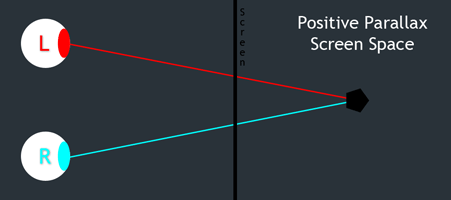
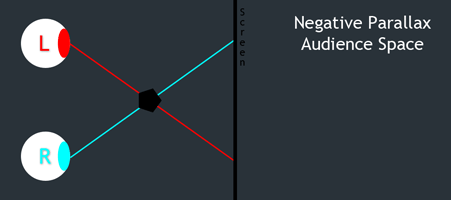
- Crosstalk -- when one eyes sees something that is meant for the other eye
- Contrast can strongly affect this effect
- Pinning / Edge Violation -- when the object comes into viewer space and is then cut off by the edge of the scree; it causes discomfort along the edges
- Pseudostereoscopic -- when the left and right eye images are reversed
- Very uncomfortable
- If you flip your glasses, it should fix this error
- It can create a weird/false sense of depth
- Channel Synchronization -- when one eye's image is not matched up with the other's image; when you see a frame that is ahead or behind of the other frame
- Channel Alignment -- the two images are not horizontally aligned; the images are not "even"
- Horizontal Image Translation (HIT) -- changing the offset of the stereo pair to change the "position" of the viewing screen
- Floating Window -- a post process done to help alleviate pinning on the edges of the frame - using a mask on the sides of the frame with one eye that will "crop" the edges, helping the eyes/brain to merge the "adjusted" edges
- you bring in the bar/mask on the right on only the right eye image
- you bring in the bar/mask on the left on only the left eye image
Physiological Depth Cues
- Eye Movement
- Duction -- single eye movement
- Version -- both eyes move in the same direction
- Vergence -- two eyes move in opposite directions
- Convergence - eyes move together (cross eyes)
- Divergence - eyes move apart (it hurts a LOT)
- Accommodation -- reconfiguration of the eye's lens based upon the contraction of the muscles in the eye (ciliary muscles)
- this doesn't change for the stereo illusion - the eyes don't refocus
- this effect is not directly connected to vergence
- the "auto focus" or readjusting of the eyes
- Binocular Disparity -- each eye sees a slightly different image
Psychological Depth Cues
- Retinal Angle -- larger objects take up more space in the image
- Linear Perspective -- foreshortening of objects with perspective
- Texture Gradient -- "merging" of textural detail over distance; you see more detail close up
- Aerial (Atmospheric) Perspective -- the fog or haze over distance
- Interposition (or Occlusion) -- the "overlapping" of objects; the objects you see is entirely is in front of the other
- Motion Parallax -- the things that are the closest to you move the quickest and are blurred, while the objects that are further from the camera move slower
"Artificial" Depth Cue - Ken Huff's cue
- Depth of Field
Camera Rigs
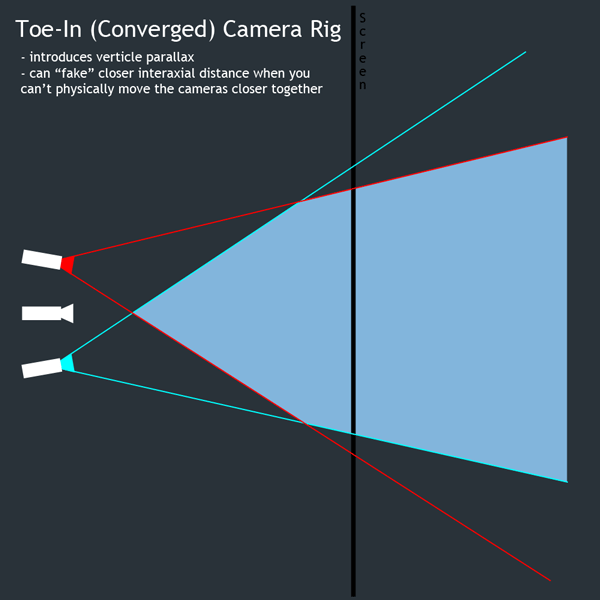
|
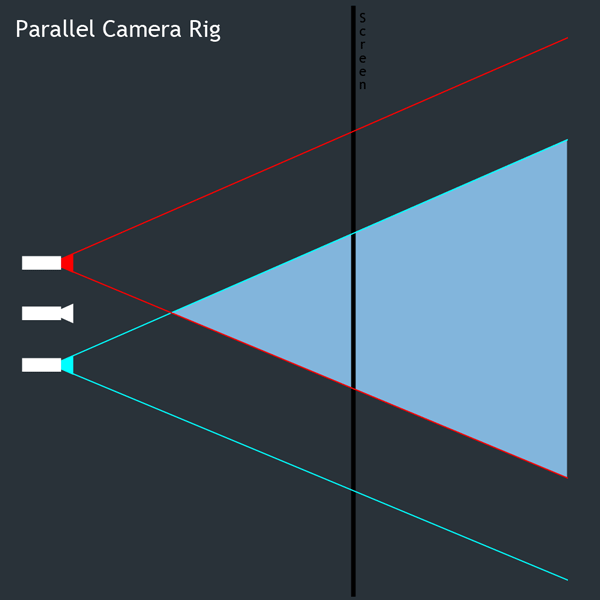
|
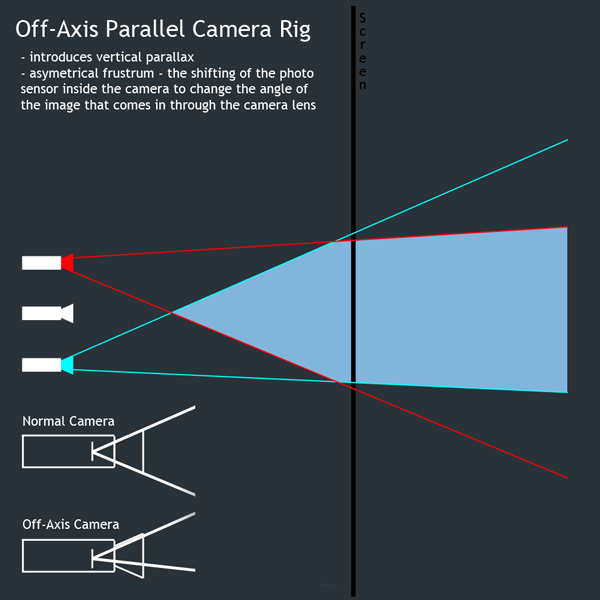
|
---------------------------------------------------------
This class introduced the founding principles of stereoscopic imaging and it's applications, restrictions, limitations, and development in a variety of mediums. It highly encouraged experimentation to help the class further it's understanding of stereo and simply what works and what doesn't work.
All work was developed for viewing anaglyphicly using Red/Cyan (or Red/Blue) glasses since that was the best and easiest method to review the work during the development process. If you want to get your own anaglyph glasses, check Rainbow Symphony (they will also send you a free pair of anaglyph glasses if you send them a self-addressed, stamped envelope). I do still have the full color original sources if they are desired, I simply don't have a way to display or view them myself.
